Summary
- Nautical fabrics boast resistance, excellent durability, and enhance the allure of your upholstery
- These materials often face considerable exposure as they directly withstand the elements of sun, water, and other weather adversities, that’s why they must be resistant
- Oversee every stage of your production with the Audaces360 multi-solution! Experience it at no cost, by downloading our free trial!
Durable, waterproof, and cozy, nautical fabrics add elegance to those seeking high-quality upholstery.
Vessels can be adorned with these fabric types, known for their tear-resistant properties, UV protection, and anti-fungal features.
If you wish to discover more about the application, characteristics, and advantages of using these fabrics, stick with us until the end! In this article, we shed light on the benefits of incorporating nautical fabrics into your production.
Happy reading!
Sumário
What are nautical fabrics?
Nautical fabrics, elegant materials that exude style and beauty, maintain their unchanging characteristics due to their sturdy structure.
This feature ensures that products coated with them remain resilient against the wear and tear caused by exposure to sea air and saltpeter.
These fabrics find extensive use in upholstery that faces extreme exposure and direct contact with the sun, water, and other weather adversities.
Their ability to resist water retention and withstand various weather conditions makes them highly suitable for such applications.
Initially designed exclusively for boats, as these vessels required special care, nautical fabrics have evolved over time with technological advancements.
Nowadays, they have a smoother texture and offer enhanced comfort, extending their utility beyond maritime contexts to various everyday items.
Furthermore, technological innovations have also contributed to the printing of nautical fabrics and the evolution of this industry.
Unlike the past when they were available only in plain colors, these fabrics now boast an array of prints, including designs crafted by renowned fashion designers.
Learn more: Industrial automation in the context of clothing 4.0 – discover the benefits
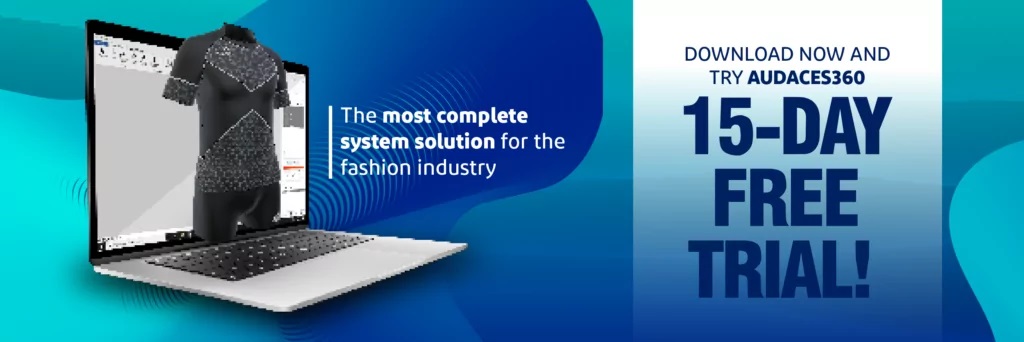
What are nautical fabrics used for?
Nautical fabrics find versatile applications in covering upholstery that is consistently exposed to harsh weather conditions and requires heightened durability.
Their inherent ability to resist flame propagation and mold accumulation makes them an ideal choice for such purposes.
Moreover, these fabrics prove highly advantageous for outdoor resistance against tearing and scratching.
Types of nautical fabric
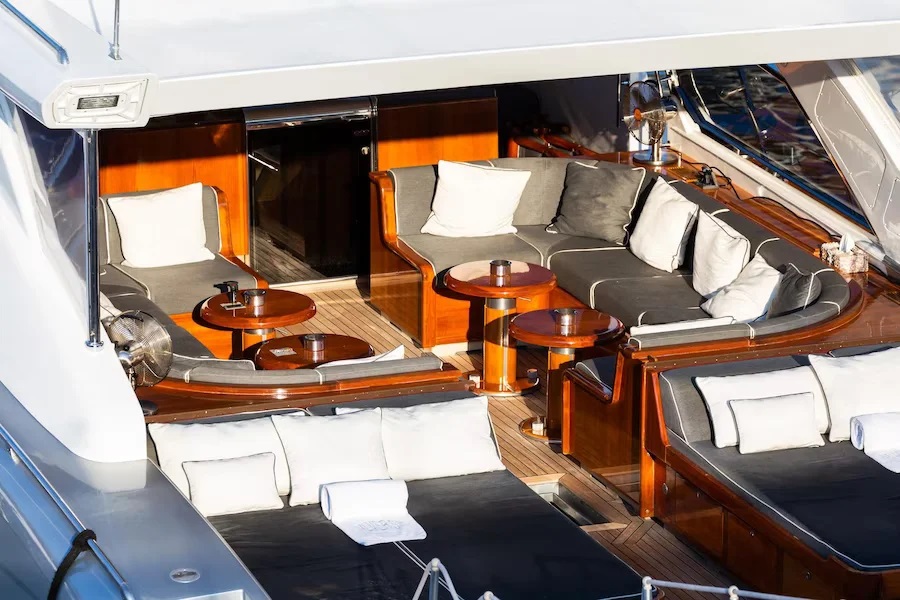
Nautical fabrics are available in a variety of materials, but two of the most renowned and extensively utilized options are Marine Vinyl and Sunbrella.
Let’s explore some of them below:
Marine Vinyl
Marine Vinyl is a PVC-coated nautical fabric, distinguished by its ability to maintain long-lived colors.
Being UV stabilized and equipped with a moisture-repelling seal, this fabric maintains fade-resistant hues over time.
Designed to endure the harshest marine conditions, Marine Vinyl has water and sun resistance, providing unparalleled resilience against the elements. Whether faced with intense sun rays, rain, or snow, the fabric’s pigments remain vibrant.
Not only is Marine Vinyl strong and flexible, but it is also super easy to clean. Its durability further extends to resistance against cuts and scratches.
From boat interiors to outdoor seating and aquatic vehicles, Marine Vinyl proves to be a reliable choice for various marine ventures.
Sunbrella
Sunbrella is known for its light resistance, excellent durability, pleasant tactile feel, and easy maintenance.
One of its notable features is its breathability, allowing air to pass through the fabric and preventing overheating.
Additionally, Sunbrella undergoes UV treatment, ensuring its colors remain vibrant and resistant to fading, even when exposed to chlorine or prolonged sun exposure.
It is also equipped with anti-mildew properties and resists cold-cracking and microbial pinking.
This fabric’s color retention is a result of its unique dyeing process. The colors are integrated into the fibers before they are transformed into threads, ensuring a long-lasting and fade-resistant finish.
Sunbrella can be used both indoors and outdoors without concern for wear and tear from sun or rain. Its applications are diverse, such as:
- Nautical pieces in general
- Coating for indoor or outdoor furniture
- Headboard coating
- Cushions
- Curtains
Learn more: Learn why regular maintenance is crucial for fabric cutting machines
Are nautical fabrics the same as waterproof fabrics?
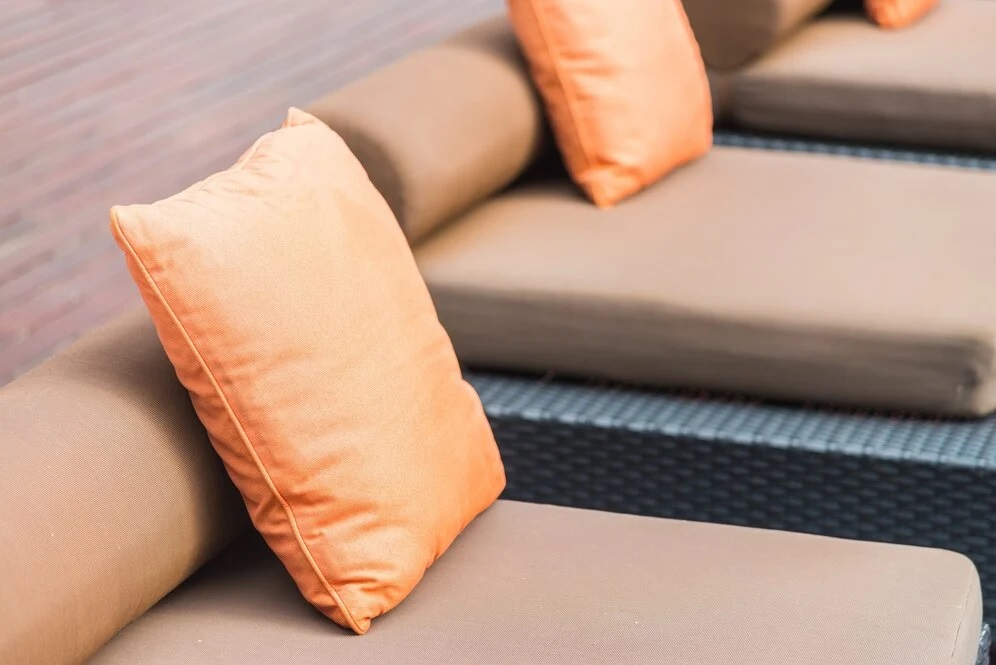
First and foremost, it is important to understand the difference between a “waterproof” material and a “water-resistant” one. According to the Merriam-Webster Dictionary:
- Waterproof: “Impervious to water, not allowing water to pass through.”
- Water-Resistant: “Designed to be not easily harmed or affected by water or to prevent water from passing through easily.”
With this distinction in mind, we can now differentiate between “nautical fabrics” and “waterproof fabrics”.
While both share the characteristic of not retaining liquid, nautical fabrics also offer additional advantages by resisting the harsh sea breeze.
However, we must keep in mind that not all marine fabrics are fully waterproof – many of the cheaper options are only water-resistant.
So, if you are seeking a material that combines all these qualities, waterproof and water-resistant nautical fabrics are the perfect choice to safeguard your upholstery and marine applications.
Learn more: What is industrial quality control in the textile business and how does it work?
Advantages of nautical fabrics
Nautical fabrics offer numerous advantages, making them ideal for those seeking beauty, comfort, resistance, durability, and protection.
Let’s dig into each of these benefits to figure out if these materials are truly the best option for your needs!
1. Resistance
If you’re seeking a weather-resistant material, nautical fabrics are an excellent choice. Their tightly woven structure enhances their overall durability and resilience.
2. Ease of cleaning
Nautical fabrics are highly easy to clean. Daily maintenance can be as simple as dusting or wiping with a damp cloth.
For more thorough cleaning, it’s advisable to use neutral soap and a brush with soft bristles to avoid any damage to the fabrics.
After cleaning, remove excess water with a dry cloth and allow the fabric to air dry in the shade.
It is crucial to be cautious about the cleaning materials used. Never apply bleach, diluents, solvents, removers, abrasives, or other alkaline products, as they can harm the fabric’s integrity.
3. Durability
Nautical fabrics have excellent durability, owing to their strength and additional factors like sun protection and water resistance.
With proper care, and following the manufacturer’s instructions, upholstery made from nautical fabrics can last for many years.
Learn more: Find out how – and why – to apply textile automation in your company
How are nautical fabrics produced?
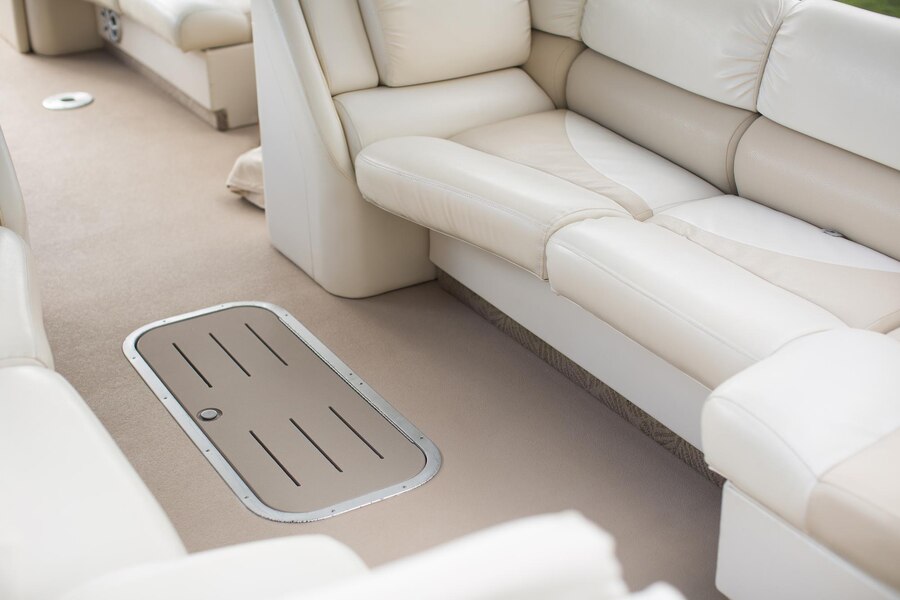
Nautical fabrics are manufactured using 100% polyester threads. The material’s inherent properties provide it with a semi-waterproof nature and exceptional durability.
To further enhance these qualities, proper care and washing with the necessary products are essential to ensure that the fabrics remain clean and well-maintained.
How can nautical fabrics be utilized?
Nautical fabrics find extensive application in boat upholstery, catering to speedboats, boats, and jet skis. However, their versatility extends beyond maritime contexts.
Any furniture that requires resistance to harsh weather and salt air can be crafted using nautical fabrics.
This includes outdoor furniture, car upholstery, and even furniture for hospital environments. Nautical fabrics offer a reliable and durable solution for various settings.
Audaces technologies are your best partner for nautical fabrics
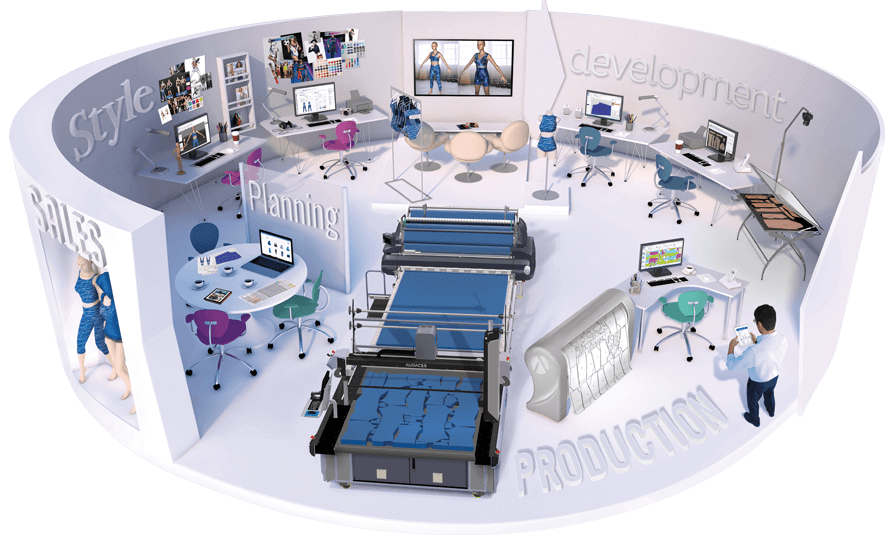
For those seeking top-notch results in their work, embracing technology is the ultimate solution. Audaces presents innovative solutions that seamlessly integrate all processes from creation to production.
With Audaces by your side, achieving the best outcomes for your business becomes a reality. Discover how it can transform your approach!
Audaces360
Audaces360 is a comprehensive multi-solution designed to conquer the industry’s major challenges and propel business success.
Developed by Audaces, this cutting-edge technology brings greater efficiency, time optimization, and agility to your company’s operations, ensuring streamlined and successful deliveries!
Audaces Fashion Studio
Created to enhance and accelerate the design process, Audaces Fashion Studio is an intuitive software that harnesses the power of technology, allowing you to work in a three-dimensional environment.
This user-friendly tool enables you to conduct fit tests and simulate textures and various materials on realistic avatars.
With Audaces Fashion Studio, you can unleash your creativity, creating and recreating designs without incurring costs or fabric wastage.
Audaces Idea
Audaces Idea software is tailored to enhance agility and improve communication during the creation process within your company.
If you seek precision and standardization in your operations, Audaces Idea is the perfect solution. This software seamlessly integrates design and technical sheet development.
Moreover, you can effortlessly incorporate images of prints and freely adjust their dimensions on the fabric.
With advanced technical detailing features, Audaces Idea allows you to anticipate costs, required resources, and manufacturing timelines for orders.
Conclusion
Nautical fabrics offer the perfect blend of comfort, beauty, and durability for upholstery needs.
Being water-resistant (and most of times also waterproof), they provide the assurance that the coating can withstand wet conditions and endure exposure to sea air and various weather elements.
If you are seeking a resilient material that elevates the quality of your products, nautical fabrics come highly recommended!
Now that you have gained insights into this topic, why not explore other fabric types that could be advantageous for your company?
Download our free e-book to expand your knowledge:
Nautical fabrics prevent wear and tear in products exposed to sea air and saltpeter, owing to their unique structure and characteristics.
Nautical fabrics are utilized for covering weather-exposed upholstery that requires additional durability, and they offer resistance to flames and mold.
Nautical fabrics differ from waterproof fabrics, as they not only repel liquid but also resist the sea breeze.










